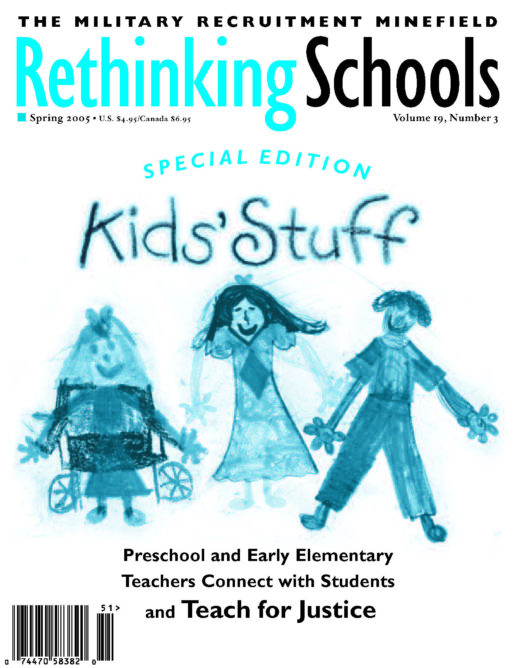The Recruitment Minefield
Critical literacy activities can protect students against predatory military recruiting
Illustrator: Michael Duffy

Emiliano Santiago.
Not many of our students know his name. But they should. Santiago joined the Oregon Army National Guard on June 28, 1996, shortly after his high school graduation in Hermiston, Ore. He served honorably, became a sergeant, and was discharged in June 2004, after eight years in the Guard.
But last October, more than three months after his discharge, the government extended Santiago’s termination date—to December 24, 2031. Yes, 2031; it’s not a misprint. Santiago’s unit was ordered to report on Jan. 2, 2005, to Fort Sill, Okla., where it would join other soldiers being sent to Afghanistan.
In November, Santiago’s attorney, Steven Goldberg of the National Lawyers Guild, filed suit in federal court in Portland, arguing that the military had no right to order Santiago to active duty months after he’d been discharged. During Santiago’s hearing in December, Matthew Lepore, the Justice Department attorney, agreed that Santiago’s activation had come after his discharge. But Lepore said that because commanders of Santiago’s unit had been told earlier that under the military’s stop-loss policy his unit might be mobilized, that was notification enough.
True, Lepore acknowledged, Santiago himself was never notified, but that made no difference. Lepore argued that the court was obliged to view this case through a “deferential lens”—to assume the military knew what was best for the military. Judge Owen M. Panner agreed. He ruled against Santiago, saying he believed the military would be harmed more than Santiago if the court ruled against the government. Goldberg has appealed to the 9th Circuit Court of Appeals. As we go to press, the court has not ruled on the appeal and Santiago and D Company of the Oregon Guard’s 113th Aviation Battalion await their final orders in Oklahoma.
High school teachers, counselors, students, and parents everywhere should know about Santiago’s case. Think you’re signing up for four years, or eight years? Think again. Santiago was 19 when he entered the military. When his new discharge date rolls around, he’ll be 54—if the military
doesn’t extend it again.
No Child Left Unrecruited
Thanks to a provision in the No Child Left Behind legislation, military recruiters have easy access to high school students these days. In Portland, where I teach, the school board in 1995 banned organizations that discriminate based on race, sex, or sexual orientation—including the U.S. military—from recruiting in the schools. NCLB over-turned that ban, requiring that recruiters have “the same access to secondary school students as is provided generally to post-secondary educational institutions or to prospective employers of those students.” The law also requires high schools to provide the military access to students’ names, addresses, and telephone numbers—unless a parent or student contacts the school to deny permission to release this information.
It was against the backdrop of the Santiago ruling and increased recruiter access to students that Franklin High School teacher Julie O’Neill began a short unit on military recruitment with her senior political science students. As I’m on leave from teaching this year, Julie invited me to collaborate on the unit.
We began by asking students to write about their experiences with military recruiters. I was astounded by students’ stories. One hundred percent of O’Neill’s students—three untracked classes of almost 40 students each—had been recruited in some manner by one or another branch of the military. Julie’s students were typical of the high school as a whole: largely white and working class, with a relatively small number of Asian Americans, Latinos, African Americans and Native Americans. Recruiters had come into classes ranging from Foods (“You have to be in the military to cook for the President, ya know”), to Oceanography, to Band, to Weight Training. Recruiters had visited the Latino Club, played a key role in the annual Field Day activities, worked with the student program that links seniors and freshmen, and approached students in the halls.
They’d badgered students in malls, called them repeatedly, emailed them, visited them at home, bought them school supplies, drove them around town, mailed them videos and DVDs, and invited them to mini-boot camp weekends. Even students whose parents had asked the school in writing not to share information with recruiters reported being contacted multiple times. The recruiters’ techniques were consistent: find out students’ after-graduation aspirations and attempt to convince them that the military was the way to realize these. Channa’s story was typical:
My 10th-grade year when I was weight lifting, they asked me, “You ever planned on joining the Marines?” I told them no. He was, like, “You ever thought about having the Marines put you through college?” The Marines called my house at least twice a week. They asked me this year if I ever thought about wrestling for the Marines. I told him no, but he said, “The Marines can help put you through college and pay you to wrestle.” One day I was waiting in line to get a bus pass. This Navy guy asked me what I had planned after high school. I told him I might kickbox. He said I could kickbox for the Navy. He handed me his card and walked away.
The Marines have extraordinary access to students in Weight Training, offering a “Marine Challenge” curriculum where students do 13 pull-ups and bench press half their weight 13 times. Recruiters yell at students and give them orders. One student described being in the weight room, “doing a normal workout and all of a sudden three recruiters were at my side counting my reps. I was like, ‘WHOAAH!!'”
Cynthia’s story showed how recruiters take advantage of the scarcity of college financial aid in their sales pitches:
A few weeks ago a recruiter called me, and I wasn’t so much annoyed that they were soliciting me. I was disturbed by what the recruiter revealed to me. They asked if I was going to college, and I said, “Yes, I am going to the University of Notre Dame.” The recruiter paused, then fired another question. “Wow. That’s an expensive school. Do you have money to pay for it?” I replied, “Yes, they are giving me $30,000 every year for four years.” Dumbfounded, the officer said, “Well, the Army can offer you lots of experiences that college can’t.” I told him I wasn’t interested, and the conversation ended. Yet I was left with the impression that they prey on kids with either no plans after high school and/or no money to pay for college.
A number of students used this predator and prey metaphor to describe recruitment experiences. Zussette wrote, “When I see them talking to high schoolers, they remind me of a pack of lions going in for the kill. They try to get them into a corner or up against a wall. They start to ask questions like, ‘Have you ever thought about joining the army?’ ‘How old are you?’ ‘You know, the army can help pay for college.'”
The stories also generated grumbling from one or two students. Ben said: “These are so negative. Doesn’t anyone have a good story about military recruiters?” But in his own story, Ben wrote about how annoyed he was by recruiters’ pressure: “Recruiters are extremely pushy and opinionated. I was promised everything from tuition to guaranteed jobs to free housing.”
I read all 100-plus recruitment stories. The more I read, the more overwhelmed I became by the sense that today’s students live in a kind of parallel universe where they maneuver daily through a psychological minefield of quota-driven recruiters.
And there was another pattern: Recruiters lie. Claire went with a friend to the recruitment office to take a math test. “When she was done with her test, he told us about how the government pays for you to go to college and after you served you still get money. I think that was the main reason she wanted to join—that and they told her that she wouldn’t have to go to Iraq. How do they know?”
They don’t; it was a lie. In a valuable article, “AWOL in America,” in the March 2005 issue of Harper’s, Kathy Dobie reports that the G.I. Rights Hotline has “heard hundreds of stories involving recruiters’ lies.” As Dobie reports, “One of the most common lies told by recruiters is that it’s easy to get out of the military if you change your mind. But once they arrive at training, the recruits are told there’s no exit, period—and if you try to leave, you’ll be court-martialed and serve ten years in the brig, you’ll never be able to get a good job or a bank loan, and this will follow you around like a felony conviction.” It’s not true, but as Dobie speculates, the threats are likely effective in keeping some unhappy soldiers from trying to get out. In fact, the expectation that recruiters make promises they can’t back up is acknowledged in the enlistment contract that prospective soldiers must sign. More on that extraordinary document later.
Lessons from Fahrenheit 9/11
One of the striking segments in Michael Moore’s documentary Fahrenheit 9/11 is the few minutes the film spends with Marine recruiters Staff Sgt. Dale Kortman and Sgt. Raymond Plouhar as they troll for prospects in the Courtland Mall in Flint, Mich. Julie and I showed this segment in class so students could reflect on a number of the techniques that military recruiters employ to snare recruits. Recruiters’ choice of the Courtland Mall in Flint instead of the suburban Genesee Valley Mall is emblematic of recruiters’ choices around the country when they concentrate on high schools in working-class neighborhoods—like Portland’s Frank-lin High School—but appear less frequently at high schools in more elite neighborhoods.
We wanted the Fahrenheit 9/11 segment to reinforce students’ own observations that recruiters probe for an individual’s career goal and then link that to a future in the military, as in this exchange:
Sgt. Dale Kortman: Gents! You know we’re looking at ya, right! You guys ever thinking about joining up?
John Kingston: I thought about going to college and playing basketball.
Sgt. Kortman: OK, OK. You any good?
Kingston: Yeah. Especially basketball.
Sgt. Kortman: Good. You can play ball for the Marine Corps, as well, you know, travel around the world, get on the Marine Corps basketball team. Um, David Robinson was in the military as well . . .
Kingston: Oh, was he?
Sgt Kortman: So, yeah, so, you can definitely hook it up so.
Never mind that Robinson was in the Navy, not the Marines, went to the elite U.S. Naval Academy at Annapolis, and stands 7-foot-1. Moore concludes the segment with a poignant comment from a young black man, Martres Brown: “[O]ne would love to have that chance to experience college life, you know, stuff young people can do without having the risk of dying in the process . . .”
Students were unfazed, chuckling at the recruiters’ techniques they recognized. Frankly, I think the segment was more startling to me than to the students. They experience this all the time; I see it in the movies. But it did reinforce our conversations about their recruitment stories. One student remarked, “It seemed the recruiters were hunting their prey.” And another: “One of the things I notice is that they target people who have low self-esteem.” This may or may not be true, but in discussions students agreed that recruiters seem to concentrate on individuals who do not have the highest grades. Interestingly, students also agreed that young women are more heavily recruited than young men.
In the segment from the DVD, Sgt. Plouhar comments to Moore, “It’s better to get them when they’re ones and twos. And work on them that way.” His observation underscores the importance of a critical examination of recruitment practices. Recruiters seek to isolate people in order to “work on them.” Anything that promotes questioning is the enemy of recruiters. By contrast, a study of recruitment is best engaged in collectively, as we share stories, look for patterns, patch together insights, and nurture habits of skepticism.
Dream Life of the Culture
Julie had asked students to bring in recruitment brochures, posters, videos, and DVDs that they’d received, so that we could use these to evaluate some of the propaganda techniques used by military recruiters. I’d gone to the local recruitment station to get some more posters and ended up a target of recruitment myself—an all-expenses paid several-day educators’ trip to San Diego to learn more about the Marines. The recruiter, Sgt. Héctor Torres, listed all the Portland teachers and counselors who’d taken him up on this offer. “We’ll put you up in a nice hotel on the beach.” He was sincere, charming, and relentless. I got a taste of how good these guys are.
We taped recruitment posters and brochures around the room in 10 “stations,” and labeled these with Post-it notes one through ten. I introduced the activity by talking a bit about the history of propaganda and advertising. A number of 11th-grade global studies classes at Franklin watch the excellent video The Ad and the Ego, probably the best classroom resource on the history of advertising in the United States. I reminded students that The Ad and the Ego points out that advertisers’ assessment of human motivation has radically shifted since advertising became a major U.S. industry in the 1920s. Then, typical ads were filled with text. Advertisers saw humans as essentially rational beings, who, if presented with sufficient evidence, could be convinced to buy their product. Thus an ad for, say, Pepsodent, would include lots of information on the product, why it’s good, bad things that could happen if it’s not used, and how to use it. But not any longer. Now, advertisers regard individuals as moved more by image and emotion and less by argument.
I shared with students a quote from University of Massachusetts professor Sut Jhally in The Ad and the Ego: “Advertisers don’t really talk about things, they talk about these things
-

Black Logo T-Shirt
$24.95 Select options -

Magazine Subscription – Digital
$24.95 / year Add to cart -

Rethinking Multicultural Education – 3rd Edition – Epub
$9.95 Add to cart -

Rethinking Multicultural Education – Epub
$9.95 Add to cart -

Rethinking Multicultural Education 3rd Edition
$24.95 Add to cart -
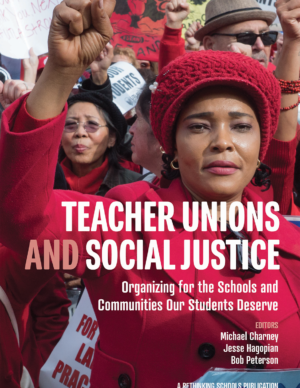
Teacher Unions and Social Justice
$29.95 Add to cart -
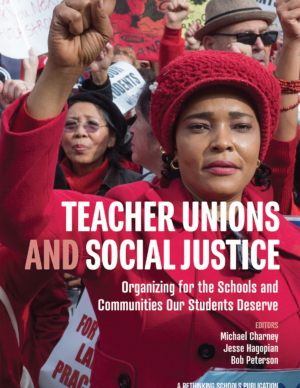
Teacher Unions and Social Justice – Epub
$9.95 Add to cart -

The New Teacher Book – Epub
$9.95 Add to cart -

Unlearning “Indian” Stereotypes MP4
$4.95 Add to cart -

Volume 37, No. 3 – Spring 2023
$4.95 Add to cart -

A People’s Curriculum For The Earth
$27.95 Add to cart -
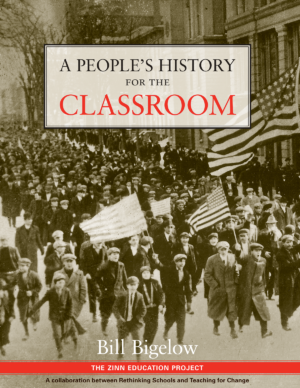
A People’s History for the Classroom
$12.95 Add to cart -

A People’s History for the Classroom – PDF E-Book
$7.95 Add to cart -

Annual Magazine Subscription
$24.95 / year Add to cart -

One Year Gift Subscription Certificate to Rethinking Schools Magazine
$24.95 Select options -

Open Minds to Equality – 4th Edition
$24.95 Add to cart -
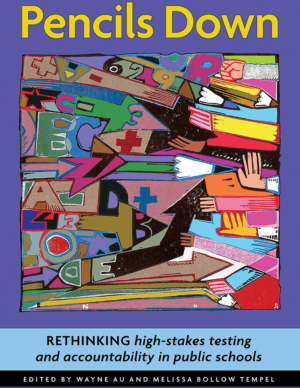
Pencils Down – PDF E-Book
$19.95 Add to cart -
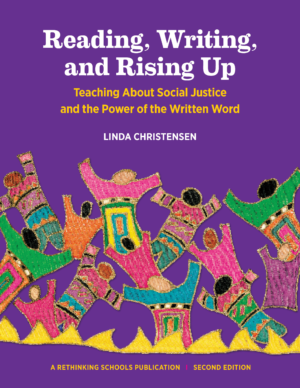
Reading, Writing, and Rising Up- 2nd Edition
$24.95 Add to cart -

Rethinking Bilingual Education
$24.95 Add to cart -

Rethinking Columbus Expanded Second Edition
$18.95 Add to cart -

Rethinking Columbus Expanded Second Edition – PDF E-Book
$13.95 Add to cart -

Rethinking Early Childhood Education
$18.95 Add to cart -

Rethinking Elementary Education
$24.95 Add to cart -

Rethinking Ethnic Studies
$24.95 Add to cart -

Rethinking Globalization
$24.95 Add to cart -

Rethinking Globalization – PDF E-Book
$14.95 Add to cart -
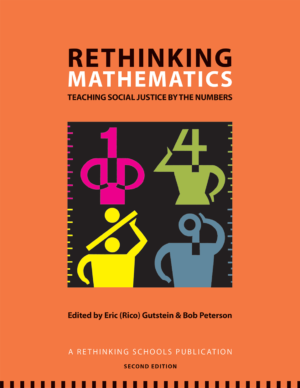
Rethinking Mathematics – Second Edition
$24.95 Add to cart -

Rethinking Mathematics – Second Edition – PDF E-Book
$19.95 Add to cart -

Rethinking Multicultural Education 2nd Edition
$24.95 Add to cart -

Rethinking Our Classrooms Two Volume Set – PDF E-Book
$19.95 Add to cart -

Rethinking Our Classrooms, Volume 1 – Second Edition
$18.95 Add to cart -

Rethinking Our Classrooms, Volume 1 – Second Edition – PDF E-Book
$13.95 Add to cart -

Rethinking Our Classrooms, Volume 2
$16.95 Add to cart -

Rethinking Our Classrooms, Volume 2 – PDF E-Book
$11.95 Add to cart -
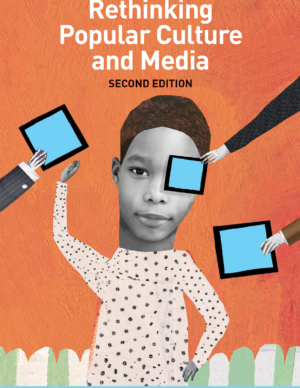
Rethinking Popular Culture and Media – 2nd Edition
$24.95 Add to cart -

Rethinking Sexism, Gender, and Sexuality
$24.95 Add to cart -

Rethinking Sexism, Gender, and Sexuality – Epub
$9.95 Add to cart -

Rethinking Sexism, Gender, and Sexuality – Print & Ebook Bundle
$29.95 Add to cart -

Rhythm and Resistance: Teaching Poetry For Social Justice
$24.95 Add to cart -

Teaching a People’s History of Abolition and the Civil War
$19.95 Add to cart -
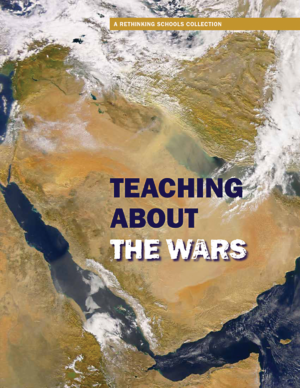
Teaching About the Wars – PDF E-Book
$0.00 Add to cart -

Teaching For Black Lives
$29.95 Add to cart -

Teaching for Joy and Justice
$19.95 Add to cart -

Teaching for Joy and Justice – PDF E-Book
$14.95 Add to cart -

The Line Between Us
$16.95 Read more -

The New Teacher Book-3rd Edition
$24.95 Add to cart -

Volume 34, No. 4 – Summer 2020
$4.95 Add to cart -

Volume 34, No. 3 – Spring 2020
$4.95 Add to cart
As a whole class, we practiced on a poster that shows a Marine who appears to be part human and part three-dimensional blueprint—very scientific and machine-like, holding an assault rifle. Students had wonderful insights, finding more dimensions to the ad than I’d considered. They talked about the power that it offers largely powerless high school students, compared it to movies like The Matrix and to video games they were familiar with, and pointed out that as part machine it promised indestructibility. As one student commented, “It says, ‘I can stand up for myself and no one will hurt me.'”
We divided students into 10 groups, and asked each group to go to an assigned poster or brochure displayed around the classroom. We asked them to take notes on the questions we raised and to make any additional observations on the materials. After students spent about four or five minutes at one station, we asked them to move to the next poster and repeated this so that each group was able to view and discuss five of the 10 recruitment materials. It was a lively activity, and the students seemed to enjoy peeling back the layers of meaning in the ads.
Afterward, we discussed some of their insights. “This Marine poster is like an invitation to all the weak kids who get picked on: You can defend yourself when you’re a Marine. The men are so quick in the picture, it’s actually blurred.” One of the ads showed young men grimacing as they did pull-ups, with the caption: “Pain is weakness leaving your body.” One student commented, “This one is saying that the Marines will help you rise above pain. You can get away from a bad or abusive childhood and get past it.”
We followed up by viewing a short promotional video from the National Guard. (By the way, these are easy to come by as recruiters hand them out like candy to students.) It promises teamwork—”There is no ‘I’ in ‘team'”—and ticks off all the qualities that someone will acquire or develop in the Guard: loyalty, respect, duty, selfless service, honor, integrity, personal courage, and education. As one student pointed out afterward, “It looks like so much fun, it’s not even a job. Like all your dreams can come true. Like summer camp for the government.”
The “Contract”
It took me weeks to locate a copy of the enlistment contract that recruits sign when entering the military. [Download PDF ] Recruiters don’t let prospects take it home, they don’t let teachers have copies, they don’t let parents have copies. No wonder. It’s a scary document. Ask Emiliano Santiago.
For some of our students, this document will be the most important contract they sign in their entire lives. Joining the military is a life-altering decision, and one that the government urges—indeed bullies—young people to make before they’re deemed mature enough even to buy a bottle of beer. A critical examination of this document should be part of the core curriculum in every high school in the United States. It’s not hyperbole to say that this study is a matter of life and death.
The “Enlistment/Reenlistment Doc-ument—Armed Forces of the United States”—its official title—is anything but straightforward. In fact, its interpretation is at the center of the Santiago case currently before the 9th Circuit Court of Appeals. In small groups, we distributed colored highlighters to students and asked them to mark passages that they found vague, disturbing, or confusing. We also asked students to circle the four items in the document that they thought were the most important for an individual considering joining the military, and to come up with six questions about the enlistment document.
When we regrouped for discussion, we went page by page. On page 1, Section 8a deals with the delayed entry/enlistment program, which applies to many of our students who join even before they leave high school. Recruits agree to “keep my recruiter informed of any changes in my physical or dependency status, moral qualifications, and mailing address.” Students wondered about the definition of moral qualification. Did this mean one’s religious affiliation, sexual orientation?
Section 8c implicitly acknowledges that some recruiters may have made false promises—like Claire’s friend who was told that she wouldn’t be sent to Iraq. It reads: “The agreements in this section and attached annex(es) are all the promises made to me by the Government. ANYTHING ELSE ANYONE HAS PROMISED ME IS NOT VALID AND WILL NOT BE HONORED.” [emphasis in original] Section 8c has a ring of full disclosure, and implies that if a recruit does get something in writing then it will be honored.
Section 9 tells recruits: “Many laws, regulations, and military customs will govern my conduct and require me to do things a civilian does not have to do.” The section states that a recruit will be subject to laws “which I cannot change but which Congress can change at any time.” Reading this section prompted one student to ask, “How can one sign a contract that is always changing?”
Arguably the most important part of the contract is section 9b— it makes all promises in the document irrelevant:
Laws and regulations that govern military personnel may change without notice to me. Such changes may affect my status, pay, allowances, benefits, and responsibilities as a member of the Armed Forces REGARDLESS of the provisions of this enlistment/reenlistment document. [emphasis in original]
Congress must pass laws, but regulations are military matters, and changes in these could nullify other parts of the document. One student said, “Anything they promise you is BS. Look at it.” Another added: “All this needs to say is, ‘You’re the military’s. Sign there.'” Another wondered: “How can the Army focus so much on honor, but not agree to honor agreements?”
As we were teaching this unit, Steven Goldberg, Emiliano Santiago’s attorney, offered a workshop for Portland teachers during a districtwide inservice day. In a room full of veteran social studies teachers, Goldberg opened: “So, are we at war?” It wasn’t merely an academic question. Section 9c says: “In the event of war, my enlistment in the Armed Forces continues until six (6) months after the war ends. . . .” So one’s length of service in the military turns on the issue of whether the United States is at war. Some teachers argued that Congress has not declared war since 1941; so, no, we’re not at war. Others said that President Bush had pronounced a War on Terrorism, for which Congress voted funds, so that did constitute “war.” And U.S. soldiers are dying in combat in Afghanistan and Iraq, so aren’t these wars—in fact, if not in title? If 40 teachers with advanced degrees couldn’t agree on such a key question, how could one expect an 18-year-old to interpret this part of the document?
Shoot a Bird
Following our examination of the Enlistment Document, we asked students to offer several pieces of advice to prospective recruits based on their reading of the enlistment contract. A few pieces of their advice:
Read the contract thoroughly.
Read the Uniform Code of Military Justice.
Don’t sign up for the military because you’re mad at your parents; you might never see them again.
Take a friend to the recruiters.
Take a lawyer.
Don’t sign unless you’re 100 percent sure, 100 percent of the time.
Although from the beginning of the unit we’d emphasized that this was not a study of the war, or even of military service, some students naturally had a hard time uncoupling recruitment from military service itself—as revealed in this piece of advice from Jasmina, a young woman who had suffered through war in Bosnia: “Shoot a bird, and then think about whether you can kill a human.”
We distributed a list of 10 pieces of advice from United for Peace & Justice (UFPJ), the organization that sponsors the GI Rights Hotline. (See sidebar, page 48.) And we asked students to compare the 10 points with the advice they suggested. Much of students’ advice echoed the 10 points, including: take a witness when talking with recruiters, carefully read a copy of the enlistment agreement, and don’t make a hasty decision when you’re upset. To some of us the items in the UFPJ document might seem to be common sense, but these bits of wisdom may be vital as students make key choices about their futures.
Phony Memo
In class, we had not yet talked about the Santiago case. Julie had a brilliant idea to introduce it. She wrote up a phony memo from the principal full of dire language about how “early data indicate that Franklin is falling far behind projected goals,” and is in danger of being labeled a failing school under No Child Left Behind. Thus, the memo read, Franklin’s school year will be extended an extra month and graduation will be postponed to June 30. “I apologize for any inconvenience this may cause, but take comfort in the shared vision of Portland Public Schools and Franklin High School to educate all its children,” blah, blah, blah. It was pitch-perfect memo-speak. Julie put it on the principal’s letterhead (with permission), used his signature stamp, and asked a colleague, Jim Dyal, to feign agitation and deliver the document to her. When he arrived at the door, Julie pretended that she was too busy to deal with it and when Dyal persisted, she asked a student to read it aloud to the class.
Students bought the charade and were dumbfounded. I took notes as they voiced their anger at this month-long extension of their school year:
“They can’t do that, I have plans.”
“Can I sue for the plane ticket I bought?”
“Let’s walk out. Who’s down?”
“Can they do that? This will put so much stress on seniors going to college.”
“That’s the administration’s problem. It’s not our problem.”
“That’s not fair. We’ve had to make plans for the summer. Can they legally do that?”
It was only when Julie put a transparency of the “memo” on the overhead and asked students to list their arguments against graduation postponement that they realized it was a hoax.
We distributed an article on the Santiago case. His enlistment had been extended 27 years. Their school year had been—momentarily—extended 27 days. Julie wanted to give students a small dose of what it would feel like to have one’s expectation of freedom ruptured. A number of students were a bit sheepish when they compared their outrage at a delayed graduation with how Santiago must feel as he faces a much greater, and more perilous, delay in his discharge.
We wanted students to understand the government’s argument in the Santiago case, as it’s a position that anyone considering enlistment should be aware of. Steven Goldberg had faxed us a part of the U.S. government’s brief defending its cancellation of Santiago’s discharge. It is grounded in the government’s interpretation of the “contract” between the government and an enlistee. Here’s a key passage from the brief filed with the 9th Circuit Court of Appeals:
Enlistment in the armed forces does not constitute merely a bargain between two parties, but effects a change of status by which “the citizen becomes a soldier”: “no breach of the contract destroys the new status or relieves . . . the obligations which its existence imposes.” Bell v. United States, 366 U.S. 393, 402 (1961) (quoting In re Grimley, 17 U.S. 147, 151-152 (1890)).
In other words, it doesn’t make any difference if the government violated the enlistment agreement with Santiago regarding his date of release from military service. Once he signed that contract, he no longer was merely a citizen but was a soldier, and when you’re a soldier you’re subject to military rule and laws governing the military.
Advertising the Truth
For the final assignment in the unit, Julie asked students to design truth-in-advertising pieces about military enlistment. Each had to have a specific target audience, include a clear message drawing on something studied in class (for example: the Santiago case, the enlistment contract, students’ recruitment stories, additional enlistment/military stories that students read, United for Peace & Justice’s 10 points). She required them to be visually effective, to be publishable, to provide sources—and to be truthful.
A number of students patterned their alternative ads after actual military recruitment ads or brochures and downloaded images from military websites. Many looked professional and had to be read to recognize the satire, as in Garrett Ross’s ad for the U.S. Army Reserves:
When it comes to strength & security . . . No, no, don’t bother reading that fine print. It’s just legal gibberish. Just sign there. Don’t worry, we’ll take care of this stuff. We’ve got lawyers and crap like that. Y’ever shoot a gun, kid? It’s really cool.
Emily Beloof’s brochure kept the Army’s original language on the cover:
There is another girl inside of you. When you wanted to stop, she pushed you harder. When you needed rest, she ran farther. She knows no bounds and tests all of the limits. She is stronger than you allow yourself to be. There is a girl inside of you who always wanted to run with the big dogs. She will not settle until she has become the best she can be. There is another girl inside you . . .
Open the brochure, and Emily’s text takes a deeper look at “the girl inside of you”:
Can she go the distance when her orders contradict her morals or ethics or what she knows to be right and good? Is she willing to live with broken promises? The Army can change your contract at any time without your permission. Be aware. Know what you do when you join up. She needs your direction. When she considers the military, make sure you ask a few questions . . .
On the Internet, Jessica Killops found a startling image by Charles Moffat of a woman being gagged by an American flag. She incorporated this into a poster denouncing militarism as an attack on women. [See page 49.] Without a doubt, Jessica’s statistics that 90 percent of recent women veterans had experienced sexual harassment of some kind in the military, and almost one third of these reported being raped, sent shock waves through the classroom.
First-time Effort
This was a first-time effort for both of us, so there are some things we would do differently. Ultimately, the fullest evaluation of military service needs to be grounded in an examination of what the military is actually doing. There are essential critical tools students can develop from a unit like this, but it would be more powerful were it connected to a broader look at the role of the U.S. military in the world, particularly in Afghanistan and Iraq. In fact, in our final activity, asking students to discuss their alternative ads in small groups, the discussions that I heard centered on why the United States is involved in Iraq. What’s on students’ minds is not just recruitment, but the military itself and the Iraq war.
As implied in Ben’s earlier comment about wanting to hear a “good story” about military service, a few students thought that by raising questions about the military we were beating up on the United States. They worried that we were attacking decisions that their family members had made, or even challenging their future career choices. These students thought we should have featured stories of vets who had enjoyed and benefited from their service. I can understand how our critical stance could have felt “one-sided” to some students. But our aim was not “balance.” This was not a unit on “here’s some bad stuff about the military and here’s some good stuff.” During their senior year of high school, students are massively assaulted by military propaganda. Much is dishonest, much is manipulative. Helping students develop the capacity to question recruitment materials could literally save someone’s life. That’s what we were after.
If we don’t help students nurture this skeptical sensibility about military recruitment and enlistment, then our hidden curriculum is “Do as you’re told,” “Trust the authorities,” “Govern-ment knows best.” This is profoundly undemocratic. It’s a curriculum of ignorance. How we teach about vital issues like recruitment says something about the kind of world we want to help create: Do we want people to be active, questioning, and engaged, or simply to be consumers of other people’s plans?
In a recent segment of PBS’ “News Hour with Jim Lehrer,” Emiliano Santiago’s mother said that as a high school junior Santiago had been “lured by the uniform of the recruiters.” How students react to the lure of the uniform, finding “the other girl inside you,” or any other recruitment ploy depends, in part, on our curriculum. As military authorities find it increasingly difficult to convince youngsters to enlist, they have begun to send even more recruiters into the field and to authorize larger payments to those who will sign up. We owe it to our students to help them critically evaluate the hard-sell and the lavish promises.

